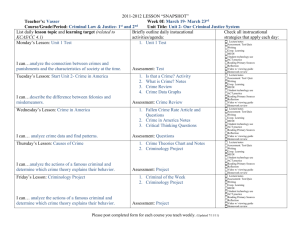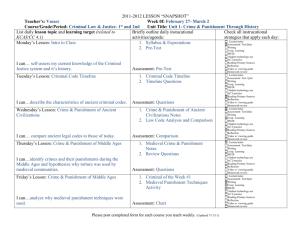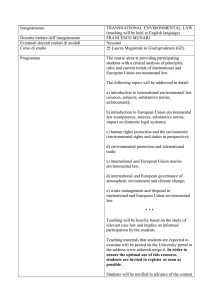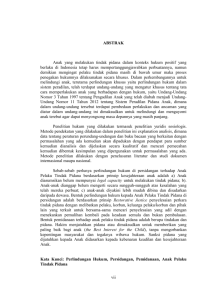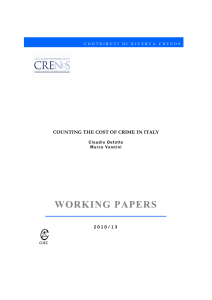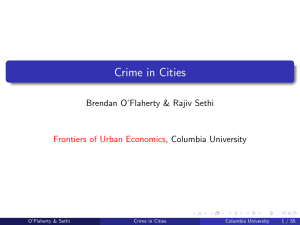Criminology
advertisement
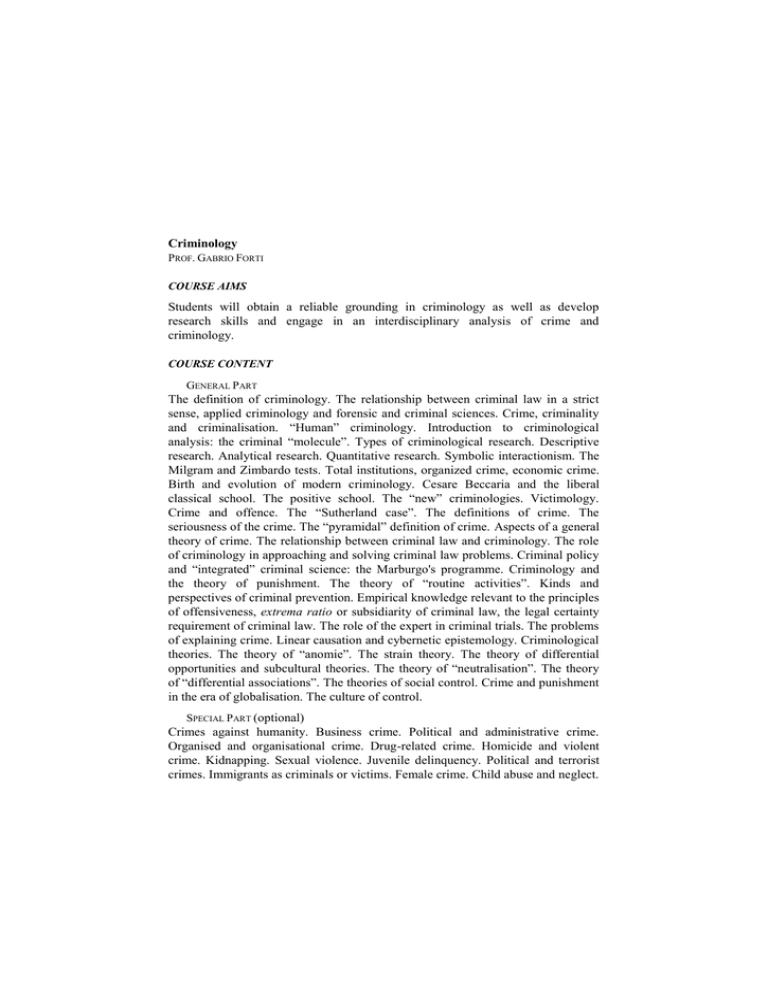
Criminology PROF. GABRIO FORTI COURSE AIMS Students will obtain a reliable grounding in criminology as well as develop research skills and engage in an interdisciplinary analysis of crime and criminology. COURSE CONTENT GENERAL PART The definition of criminology. The relationship between criminal law in a strict sense, applied criminology and forensic and criminal sciences. Crime, criminality and criminalisation. “Human” criminology. Introduction to criminological analysis: the criminal “molecule”. Types of criminological research. Descriptive research. Analytical research. Quantitative research. Symbolic interactionism. The Milgram and Zimbardo tests. Total institutions, organized crime, economic crime. Birth and evolution of modern criminology. Cesare Beccaria and the liberal classical school. The positive school. The “new” criminologies. Victimology. Crime and offence. The “Sutherland case”. The definitions of crime. The seriousness of the crime. The “pyramidal” definition of crime. Aspects of a general theory of crime. The relationship between criminal law and criminology. The role of criminology in approaching and solving criminal law problems. Criminal policy and “integrated” criminal science: the Marburgo's programme. Criminology and the theory of punishment. The theory of “routine activities”. Kinds and perspectives of criminal prevention. Empirical knowledge relevant to the principles of offensiveness, extrema ratio or subsidiarity of criminal law, the legal certainty requirement of criminal law. The role of the expert in criminal trials. The problems of explaining crime. Linear causation and cybernetic epistemology. Criminological theories. The theory of “anomie”. The strain theory. The theory of differential opportunities and subcultural theories. The theory of “neutralisation”. The theory of “differential associations”. The theories of social control. Crime and punishment in the era of globalisation. The culture of control. SPECIAL PART (optional) Crimes against humanity. Business crime. Political and administrative crime. Organised and organisational crime. Drug-related crime. Homicide and violent crime. Kidnapping. Sexual violence. Juvenile delinquency. Political and terrorist crimes. Immigrants as criminals or victims. Female crime. Child abuse and neglect. Urban crime. Portrayal of crime on television. New slaveries: trafficking in human beings. Female victimisation. Crime, criminal law and literature. The police. Crime and globalisation. Predatory crime. READING LIST General Part G. FORTI, L'immane concretezza. Metamorfosi del crimine e controllo penale, Cortina, Milan, 2000. Attendance at the course requires not just a regular presence at lessons but also participation at the tutorials given by dott.ssa Arianna Visconti and the oral seminars (see Notes below) held by the students themselves in the final part of the academic year. For students who assiduously attend lectures the textbook in question will just supplement lecture notes. Students not attending lectures must rely completely on the book. During the course, which will be marked by constant reference to the general theory of crime, numerous specific crimes and case law, various other textbooks will be cited to allow students to gain more in-depth knowledge of various areas. The study of the subject will be done on the basis of a close co-ordination between criminological principles and data on the one hand and the relevant legislation and branches of law on the other hand. Hence students, especially those from the Faculty of Law, are strongly advised to constantly refer to their criminal law textbook as well as updated versions of the criminal and criminal procedure codes. Special Part Students attending lessons may do oral or written interdisciplinary research (crime and criminology) on one of the subjects set out in the reading lists that will be handed out after the first course months. The research must be agreed with the teacher and be lead exclusively in accordance with the methodology learnt during the course (see Notes below). Students who have not regularly attend lessons or who have not done the interdisciplinary research can complete the special part of the course and acquire the relevant additional credits (see Notes below) through one of the following study options: 1. G. FORTI-C. MAZZUCATO-A. VISCONTI (ed.), Giustizia e Letteratura I, Vita e Pensiero, Milano, 2012 (at least two Parts of the volume); 2. G. FORTI-C. MAZZUCATO-A. VISCONTI (ed.), Giustizia e Letteratura II, Vita e Pensiero, Milano, 2014 (at least four chapters of the volume). 3. G. FORTI (ed.), Il prezzo della tangente. La corruzione come sistema a dieci anni da "mani pulite", Vita e Pensiero, Milan, 2003; 4. E. SUTHERLAND, Il crimine dei colletti bianchi. La versione integrale (G. Forti, ed.), Giuffrè, Milan, 1987; together with: G. FORTI, Percorsi di legalità in campo economico: una prospettiva criminologico-penalistica, Associazione per lo Sviluppo degli Studi di Banca e Borsa, Milan, 2006 (also available on line at http://www.assbb.it/CMI/quaderno_etica_15.pdf). 5. A. CERETTI-L. NATALI, Cosmologie violente. Percorsi di vite criminali, Raffaello Cortina Editore, Milano, 2009. 6. A. CERETTI-R. CORNELLI, Oltre la paura. Cinque riflessioni su criminalità, società e politica, Feltrinelli, Milano, 2013. For the students engaging in interdisciplinary research for the special part of the course as well as for all undergraduates in criminology who wish to devote themselves to empirical research, the following book may be useful: C. MERAVIGLIA, Metodologia delle scienze sociali. Un'introduzione, Carocci, Rome, 2004. TEACHING METHOD Lectures on the general part, optional individual or group seminars regarding issues studied as part of the special part as well as meetings with experts in the field of criminology, criminal law and jails. In the second half of the academic year tutorials on organizational and economic crime will be organised. Students who so wish may also participate in further series of dedicated lessons or seminars of criminal law or criminological interest during the academic year for which the Faculty may decide to award credits. Amongst which, again in the 2014-15 academic year, will be the series of seminars on “Giustizia e Letteratura” (Law and Literature). ASSESSMENT METHOD Oral examination at the end of the year, which will take account of the interdisciplinary oral or written research carried out by students who regularly attend lessons. NOTES The Criminology course carries with it 8 credits for students who do just the general part of the course and 9 credits for those who successfully complete the special part of the course in one of the following ways: a) successfully undertaking the seminar research, written or oral b) studying of one of the books specified for this part of the course and passing the associated test. For degree courses governed by the old regulations (four-year degree in law), the study of the additional textbooks for the special subject is mandatory. Familiarity with the fundamental principles of criminal law would be particularly useful for those doing the examination. Degree theses in criminology will only be assigned to students who have attended all of the course, who have obtained at least a grade of 27/30 in the final exam and who have a good knowledge of either English or German. Further information can be found on the lecturer's webpage at http://docenti.unicatt.it/web/searchByName.do?language=ENG or on the Faculty notice board.
